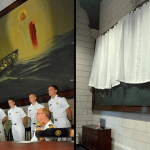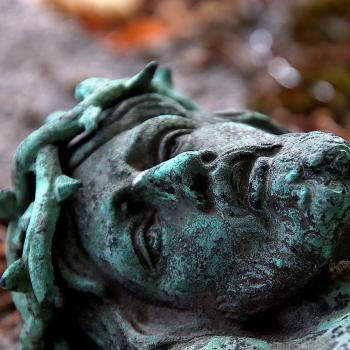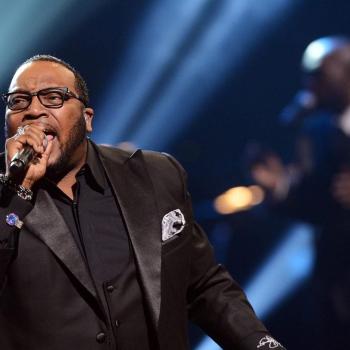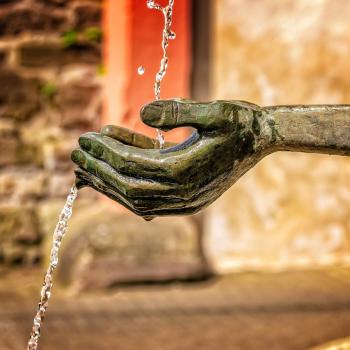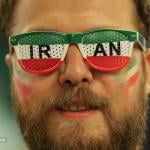Habemus Papam! We have a new Pontiff, and his name is Pope Leo! Well, his God-given name is Robert Francis Prevost of Chicago, Illinois.
Spend enough time on the Web, and you’re bound to run into a note about who Cardinal Prevost is, his heart, his views, and even how he is elected. But who is Pope Leo? It’s not the honorific name Cardinal Prevost took on, but why? Among the 266 men who sat in the Holy See before him, why did he choose Pope Leo as his Papal moniker? It’s among the most popular papal names selected from behind John (21), Gregory (16), Benedict (15), and Clement (14).
The idea of taking on a new name is a rite of passage in the Papacy, a symbolic move to signify a new beginning. This is the first impression the one who becomes Pontiff has to underscore the vision of his Papacy. That name carries history and purpose, achievement and platitudes. Cardinal Prevost chose “Leo,” which is Latin for Lion. Is that why he chose the name Leo? Does he have an affinity for the 13 other Leos who have sat in the Holy See?
Let’s bring the history of his chosen name closer to home.
Before we delve into those questions and gain an understanding, stay in touch with faith-based issues that hit “close to home.” Subscribe to our free newsletter and never miss what’s being said about the Church and being done in the Church—and what real Christians can say and do in return to defend the love and work of Christ.
Who is Pope Leo?
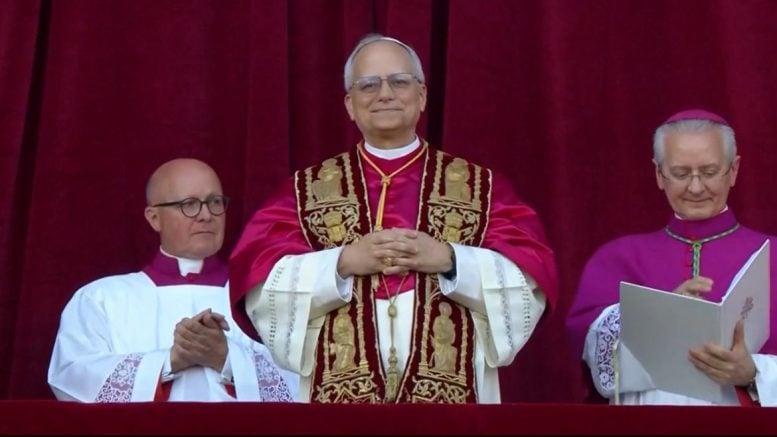
By now, it’s known who Pope Leo XIV is, the man born Robert Francis Prevost. An Augustinian Friar, he is the first American Pontiff in history. Cardinal Prevost, 69, is from Chicago. Imagine a Pope who graduated from Villanova and loves the Chicago White Sox. Despite his love of baseball, he was considered the “least American” among the College of Cardinals. Prevost, fluent in Spanish and Italian, worked for a decade as a missionary in Trujillo, Peru, until 2023.
While he is committed to continuing the centrist work of Pope Francis, a man who appointed Prevost as Papal Prefect (lawyer), why did he choose Leo? The man studied math at Villanova and canonical law in Peru but decided on Leo. Not Francis II or Marcellinus II (two of 44 names only chosen once). Exploring the why shows the how in choosing this 15th name. In the history of the Roman Catholic Church, only five of the 15th Pontiffs have been declared a Saint (or been canonized). The curious thing is of the five popes named Leo who have been canonized, not all are considered to have the most significant impact on the Papacy.
Pope Leo I (440-461)
Because historical records don’t offer his real name, Leo of Tuscia became known as “Leo the Great.” That honorific was only given to two other popes, Nicholas I (858-867) and Gregory I (590-604). His most enduring legacy is his articulation of Christ’s dual nature—fully divine and fully human—through the Tome of Leo, which laid the groundwork for the Council of Chalcedon in 451. Yet, his seminal work was talking down Attila the Hun from sacking Italy. He asserted the moral authority of righteousness over the temporal powers of an imperial leader. The Pontiff turned away the Vandals with the love of God, which was deemed a miracle for his canonization.
Pope Leo II (682-683)
Although Pope Leo II was only in the Papacy for less than a year, he was canonized for his affront against a heretical theological thought called Monothelitism, which denied Jesus had two wills—divine and human. The man thought to have been born with the name Leo was chronicled as a gifted linguist and musician. His legacy doesn’t get enough credit for mastering the Gregorian Chant to focus on sacred worship and liturgical hymns. Pope Leo II is the reason for orthodoxy from glorious worship to the sharing of the Word in the Catholic Church.
Pope Leo III (795-816)
In the 8th century, the Pope was still a symbolic head of state, much like King Charles of England. This Leo (another thought to have been born Leo) is known for having crowned Charlemagne the Great, who established the “Holy Roman Empire,” which lasted a millennium. Born into poverty, Pope Leo III was known for his love of government. That passion would carry him until he fulfilled the mission of the Papacy. The engagement he forged with Charlemagne laid the foundation for not only the political strength of the Roman Empire but also the ecclesiastical power of the Catholic Church.
Pope Leo IV (847-855)
Much of Leo IV’s work isn’t known outside of advanced liturgical scholars in the Roman Catholic Church, but he was the first Pope Leo who was Roman by birth. He took bold steps to reform clergy discipline. Much like the Jesuits who sought an overhaul in the Catholic Church, Pope Leo IV wanted to preserve the sanctity of the Holy See by simony (the act of buying miracles or acts of faith) and laxity (apathy among God’s servants). His legacy lasted until the 17th century when his “Leonine City” walls were razed, the first time walls were erected to protect the Vatican.
Pope Leo V (903)
Given that he sat in the Holy See for less than a year, this unknown native son of Priapi, Greece, was kicked out of the Vatican and imprisoned by the antipope Christopher, the first of those who used military power to sack the Papacy (ergo, the “anti”-Pope). Whatever he did in the Vatican is largely overshadowed by what happened around it. The beginning of the 10th century, stained with the corruption and instability of the papal period, was known as the Saeculum Obscurum, or the “dark age of the papacy.”
Pope Leo VI (928)
The dark age of the Papacy was gaining unfortunate speed. He was only in the Vatican for seven months because of threats from Arabic raiders who wanted to remove Roman leaders from authority and the Pope from the Holy See. Beginning his reign as Pope, Leo would die in office in February of 929. Leo’s Pontificate took place in the chaotic era of the Western Church. Pope Leo VI told every Christian to help him against the Muslim invaders. There was no request; He said that for all who died in the effort to defend the Papacy, that person would not be refused entry into the kingdom of heaven. Many think this was the indirect beginning of the Crusades.
Pope Leo VII (936-939)
A Benedictine Monk believed to have been born “Leo,” Pope Leo VII served as a priest of St. Sixtus and a Benedictine monk before becoming the bishop of Rome. Pope John XI’s predecessor was imprisoned by Duke Alberic II of Spoleto in Italy, who ensured that Leo would become the next Pontiff. Among Alberic’s various titles and important positions, he was also the prince and senator of the Romans. Pope Leo’s legacy would be marked as a failure because He permitted the expulsion of the Jews from their homes in German cities and lands.
Pope Leo VIII (963-965)
Born Lotario dei Conti di Segni, Pope Leo seems destined for the Holy See. Initially, a layman serving as protoscriniarius (chief notary) of the papal chancery, Pope Leo VIII, was ordained and installed by Emperor Otto I. He later became known as Leo of Rome or Leo of the Chancery. The confusion about Pope Leo VIII’s legacy is he was the Pontiff twice. The first time, he is considered to have been an antipope in opposition to John XII, who was a robber, a murderer, and an incestuous person, unworthy to represent Christ upon the pontifical throne. Because of that moral victory, he was voted into the Holy See again by Roman Emperor Otto I, succeeding Benedict X. He remained in the Vatican until he died in 965.
Pope Leo IX (1049-1054)
Bruno von Egisheim-Dagsburg was born into a family of lifelong, aristocratic Catholic servants and seemed destined for the Holy See in Rome, and later became head of the strongest Pontificate in the Dark Ages. When Cardinal Dagsburg became Pope Leo IX, he immediately targeted creating uniformity in the church. He wanted to eradicate several aspects of the clergy to get servants’ minds back on Christ. Permeating wrongdoings, such as concubinage (clerical marriage), simony (buying and selling of ecclesiastical offices), and lay investiture (conferment of an ecclesiastical office by a lay ruler). Only his rules became so stringent that he created the great schism, separating the Roman Catholic Church from the Eastern Orthodox churches.
Pope Leo X (1513-1521)
Although the son of the wealthy and influential Lorenzo de’ Medici, Giovanni isn’t considered one of the most pious men to sit in the Holy See. Because of his family’s influence, he was a cleric at age eight and a cardinal deacon at Santa Maria in Domnica of Rome at 13. His famous quote goes against everything the Papacy represents: “Since God has given us the papacy, let us enjoy it.” His debauchery and embrace of hedonism while Pope Leo X created another schism. It inspired a young theologian named Martin Luther to stake his lauded 95 Theses to the Wittenberg Abbey door in 1517. Each thesis condemned the hypocrisy of the Roman Catholic Church. Luther was marked a heretic and excommunicated by Pope Leo X, but their disdain for each other (personal and spiritual) sparked the Protestant Reformation.
Pope Leo XI (1605)
Also from the prominent House of Medici, Alessandro di Ottaviano de’ Medici is known for having one of the briefest papal appointments ever. The College of Cardinals elected him to helm the Vatican on April 1, 1605. Because of his advanced age and no treatment for what is believed to be a fever, he died 27 days later.
Pope Leo XII (1823-1829)
Born with one of the longest names to grace the Papacy, Annibale Francesco Clemente Melchiorre Girolamo Nicola della Genga (yes, that’s his name) chose Pope Leo XII to restore honor to the name, which implies strength and nobility. A highly conservative and religious man, Pope Leo XII ruled against everything Pope Leo X put into place, including indulgences and spending church money for pleasure. His conservative views, which were known throughout his Pontificate, were arcane and rigid. All schooling was supposed to be in Latin, and Jewish people weren’t allowed to own property. He also threatened excommunication for any seamstress making low-cut dresses. Although he served for six years as Pontiff, he was frequently ill and succumbed to bed rest throughout his Papacy.
Pope Leo XIII (1878-1903)
Cardinal Gioacchino Vincenzo Raffaele Luigi Pecci is why Pope Leo XIV chose his Pontificate name. He was an intellectual and political activist who believed the Roman Catholic Church should lead social reform. That ardent fervor to serve others earned him the name of “the Pope of the Workers.” He famously defended workers’ rights to a living wage in his encyclical “Of New Things” in 1891. While he believed science and religion could coexist, his faith in God remained prevalent. Pope Leo XIII believed the Roman Catholic Church (and any body of believers) should reflect the world it wanted to reach—not only for the elite. Those principles stay in touch with the church today. Like Pope Leo, who followed him, Pope Leo XIII chose his honorific because of his predecessor’s interest in education and helping create equal ground for all believers.



